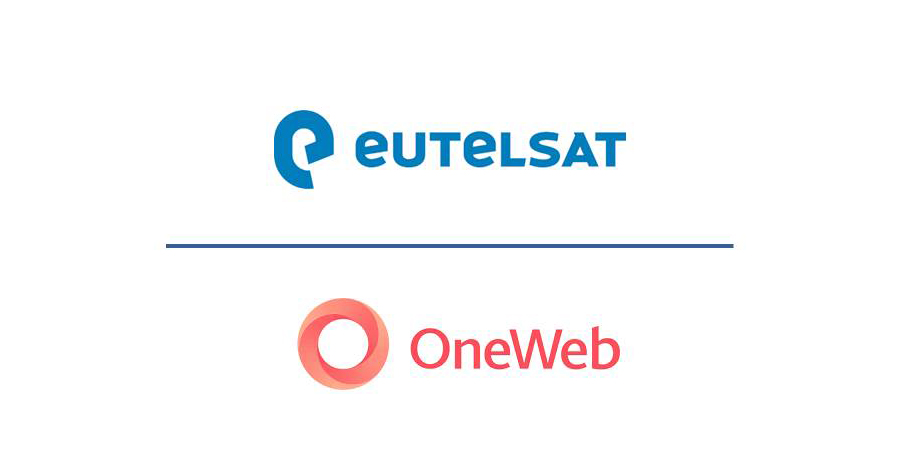Eutelsat impresses with OneWeb bundle
October 13, 2022
By Chris Forrester

Eutelsat CEO Eve Berneke delivered a masterclass three-hour presentation October 12th to an audience of analysts, bankers and investors and explained the logic and ambitions behind its recent deal to merge with LEO constellation OneWeb. Her highlight was that margins from the new pairing would eventually rise to reach the high margins currently enjoyed in Eutelsat’s Broadcast division.
The Eutelsat+OneWeb agreement was signed in July 2022 whereby Eutelsat and OneWeb shareholders will each own 50 per cent of the final company’s shares. The deal will represent the very first Geo-stationary operator with a low Earth operator (LEO).
The market, however, made its opinion felt by selling Eutelsat stock, which fell 55 cents on the day to €8.18 per share. Indeed, Eutelsat’s share price has yet to recover from the day prior to the OneWeb announcement when shares were trading at €10.43.
Berneke said the deal would:
- accelerate the commercialisation of OneWeb’s fleet as it enters the final stages of its global deployment;
- jointly address customer needs, initially through bundled services for some customers, from day one, while working together on the optimal combined solutions to address and expand future use-cases;
- capture OpEx savings upstream and maximise operating efficiencies at an early stage, and;
- maximise capex savings through the early, joint design of OneWeb Gen 2 as part of a combined GEO/LEO infrastructure, delivering significant savings compared to any potential LEO new entrant.
Moreover, she (and OneWeb CEO Neil Masterson) painted an attractive picture of the combined outfit’s future, and its road map as to how it will make the journey.
- Average annual revenue synergies of c. €150 million by year 4
- Annual run-rate pre-tax cost synergies over €80 million by year 5
- Average annual capex synergies of c.€80 million from year 1
- The rationalisation of Eutelsat’s long-term GEO fleet by focusing on Video hotspots and ad-hoc complements to LEO capacity with the traffic from legacy GEO connectivity assets migrated to LEO
- On-ground rationalisation, with the mutualisation of ground infrastructure (operation centres, teleports, baseband, fibres)
- Scale impact, with greater purchasing efficiency linked to larger procurement volumes of both satellite manufacturing and launch service
Eutelsat would scrap its dividend policy for the next three financial years (the 2022 dividend will be paid) to help fund the Generation 2 OneWeb fleet.
Berneke outlined the “double digit growth” likely to flow from deal and that OneWeb (other than Musk’s Starlink, Amazon’s Kuiper or Telesat’s Lightspeed) was a “unique asset” and that the OneWeb fleet gave the new company access to untapped market potential with full global coverage expected by this time next year.
All barriers to adoption set to gradually reduce, driving market expansion at an unprecedented rate,” she stated. There would be a “Step change in terminals, with continuous decrease in production costs and ease of use: self-installed terminals on their way,” she added.
Stressing that Eutelsat’s expectations were “conservative” she nevertheless talked of a satellite market “tripling in size and mainly driven by Non-geostationary growth” and with NGSO “representing some 50 percent of the market by 2030.”
She highlighted the 2030 market picture, saying:
- Fixed Data, worth $3.9 billion (€3.2bn)
- Government, worth $3.9 billion
- Mobility, worth $3.4 billion
- Consumer broadband, worth $4.4 billion
Masterson explained that OneWeb already had its deal pipeline valued at $2.7 billion and had more than 150 customer trials underway. It had “early mover advantage” when compared to the other systems still looking for funding (other than Starlink). Its first fleet of 648 satellites were built and business was being done ahead of the completion of the fleet.
Its satellites “switched themselves off” while over the world’s oceans in order to extend satellite life to some seven years.
Moreover, it had achieved priority rights in Ku-band and Ka-band. “Other LEOs need to coordinate with or work around OneWeb to avoid interference.” OneWeb is already licensed in 57 nations, and this would improve once the company tapped into Eutelsat’s relationships.
User latency was impressive with average one-way latency of 70ms, download speeds of 195 Mb/s and upload of up to 32 Mb/s.
OneWeb’s second Generation craft would deliver a 5-fold capacity increase on Gen 1, have a 10-year lifetime and a lower cost per Gb/s. Launch of Gen 2 is scheduled for “early 2028”.
Berneke also spoke – perhaps over-optimistically – of Eutelsat’s prospects in the demand for a European LEO constellation. Not helping in this area is the UK’s so-called ‘Golden Share’ which is not likely to help matters in Brussels.
The merger is expected to wrap during H1 next year with regulatory examinations taking place now and into Q1/2023.
